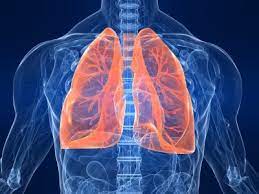A new study led by Fereshteh Mehrabi, a postdoctoral fellow at Concordia University, sheds light on the intricate relationship between social isolation, loneliness, and frailty in older adults. Published in Age and Ageing, the study explores how these three factors interact in a bidirectional cycle, deepening over time as individuals age.
Drawing on data from over 2,300 Dutch older adults, the study tracked participants across seven waves of data collection between 1995 and 2016. The findings reveal that frailty, loneliness, and social isolation are not just parallel issues faced by aging individuals—they can influence each other in complex and self-reinforcing ways. As people age, the risk of developing frailty may increase the likelihood of becoming socially isolated or lonely, and conversely, isolation and loneliness can contribute to the progression of frailty.
A Self-Reinforcing Cycle
Mehrabi and her co-authors observed that in six out of seven data waves, frail older adults were more likely to experience loneliness, and in five out of seven waves, social isolation. The study’s authors stress that these conditions are not just correlated but are part of a dynamic, self-perpetuating cycle. The frail may become more isolated as their physical health declines, while social isolation and loneliness can accelerate physical decline, contributing to an overall poorer quality of life.
“In older adults, frailty is often associated with increased loneliness and social isolation, and these effects tend to reinforce one another over time,” said Mehrabi. “The challenge is how to break this cycle before it leads to further decline.”
Data and Methods
The research relied on data from the Longitudinal Aging Study Amsterdam (LASA), a project that has followed participants since 1992. The average age of participants was 72.6 years, and about half were female. The study collected data every three years, using surveys to assess participants’ levels of social isolation, loneliness, and frailty.
To gauge social isolation, participants answered questions about their marital status, living situation, frequency of contact with family and friends, and involvement in group activities. Loneliness was assessed through questions focused on the quality of personal relationships, asking respondents how much they missed having close friends or family.
Frailty, meanwhile, was measured using a range of factors including self-reported health issues, functional limitations, chronic diseases, and memory complaints. Frailty signifies a state of reduced physiological reserves that makes individuals more vulnerable to stressors like illness or injury.
Reversibility and Intervention
Despite the seemingly grim relationship between frailty, loneliness, and social isolation, the study also highlights a hopeful possibility: these conditions are not necessarily irreversible. Mehrabi emphasizes that early intervention, such as promoting social engagement and encouraging physical activity, can help mitigate frailty and isolation. Activities like yoga, tai chi, or even participation in local library programs can provide older adults with valuable social connections and physical exercise.
“It’s not just about addressing social isolation,” Mehrabi said. “We need to target frail or pre-frail individuals—those in the early stages of physical decline—and engage them socially. It’s crucial that we improve their social connections.”
The study calls for a shift in how interventions are designed for older adults. While much of the focus has been on combatting social isolation, there is a growing recognition that frailty itself should be an area of focus for social interventions.
Conclusion: The Path Forward
As the global population ages, understanding and addressing the intertwined issues of frailty, loneliness, and isolation will become increasingly important. Mehrabi’s study emphasizes that these conditions are not isolated challenges but are deeply interconnected. By breaking the cycle of frailty, loneliness, and isolation, it may be possible to improve the overall well-being of aging individuals and reduce the burden on healthcare systems.
The research, which spans two decades of data, has broad implications for aging populations worldwide. More than just a call for awareness, it offers a blueprint for intervention—one that emphasizes social connectedness and physical health as keys to maintaining independence and quality of life in older adults.
The full study, The Temporal Sequence and Reciprocal Relationships of Frailty, Social Isolation, and Loneliness in Older Adults Across 21 Years, can be found in Age and Ageing (2024).
Co-authors of the paper include:
- Mary Louise Pomeroy and Emerald Jenkins of Johns Hopkins Bloomberg School of Public Health
- Thomas Cudjoe of Johns Hopkins School of Medicine
- Elsa Dent of Flinders University, Australia
- Emiel Hoogendijk of VU University Medical Center, Amsterdam
For further reading, visit DOI: 10.1093/ageing/afae215.












